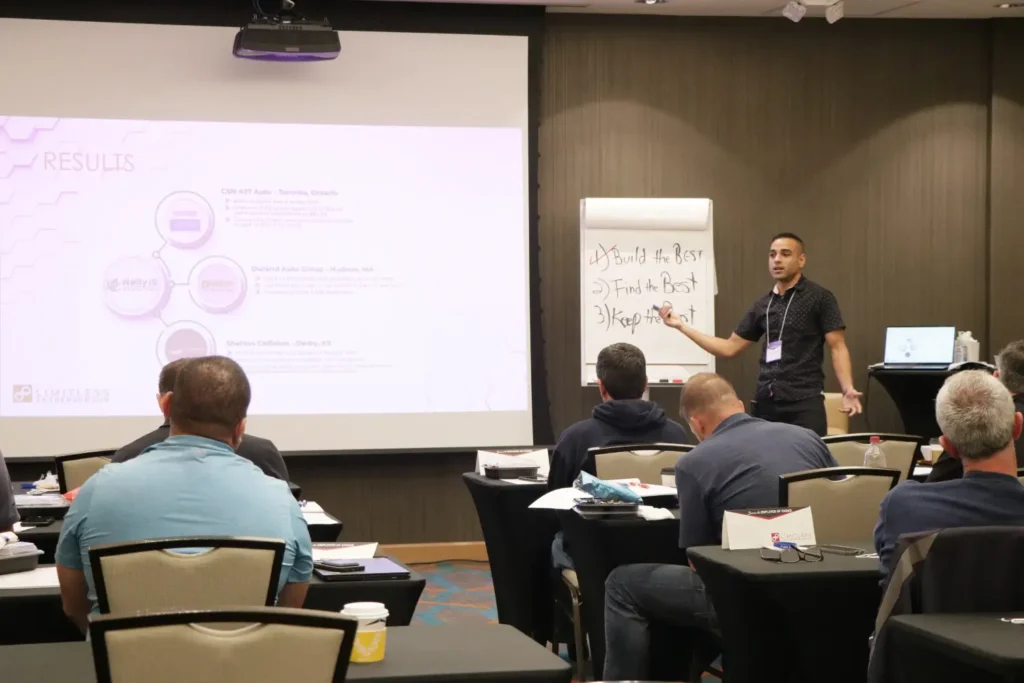How to Delegate Without Micromanaging or Losing Control
By Nelly Perez
Most contractors I talk to want to get out of the weeds.
They know they need to delegate. They know the business can’t depend on them forever.
But every time they hand something off, it somehow boomerangs right back.
Someone misses a step.
The job isn’t done right.
They have to jump back in and fix it.
So what do they do?
They stop delegating.
Or worse, they convince themselves no one else can do it like them.
If that sounds familiar, you’re not alone.
I used to think delegation was simple.
Tell someone what to do, and they’ll handle it.
That mindset nearly broke my business.
The Belief That Breaks Most Operators
Most people think delegation is about giving a task away.
But what they’re actually doing is abandoning the task without a system to support it.
“Hey, take care of this.”
No real instructions. No clear expectations. No feedback loop.
That’s not leadership. That’s setting someone up to fail.
Here’s what happens when delegation has no structure:
- Your team keeps coming back with questions
- You end up correcting their work every day
- You feel like it would’ve been easier to just do it yourself
That’s not buying back time.
That’s babysitting.
And it’s the reason so many contractors stay stuck as the bottleneck in their own business.
The EIDN™ Framework: How I Delegate Without Losing Control
After years of leading teams and building systems for over 500 contractors, I learned one thing:
You don’t scale by dumping tasks.
You scale by installing ownership.
That’s what the EIDN™ Framework is built to do.
It’s the four-step process I use to systemize and delegate anything inside the business so it gets done right the first time, every time.
Here’s how it works:
Engineer
Break the task down.
Define exactly what “done right” looks like and what “done wrong” looks like.
Explain why it matters. Don’t assume common sense will cover it.
Integrate
Don’t let the process sit in a binder or get buried in Google Drive.
Build it into your system as a checklist, template, or tool your team actually uses in real time.
Delegate
Now that it’s engineered and integrated, assign clear ownership.
Train the person. Answer their questions.
Then hold them responsible for results, not just completing steps.
Nurture
Track it. Build KPIs or scoreboard metrics around it.
Review performance regularly and improve the process as the business grows.
Why This Works Even If You’ve Been Burned Before
I’ve used the EIDN™ Framework to delegate every function of my business without micromanaging, without guessing, and without losing control.
This is how I scaled my own coatings company, stepped out of day-to-day operations, and exited while it was still booked out.
It’s also how we help contractors inside EIDN™ move from reactive, memory-based management to real operational clarity.
When delegation is built on a system, your team doesn’t just take tasks off your plate.
They take ownership of the result.
The Real Shift: From Task-Dumping to Ownership
Most owners don’t have a delegation problem.
They have a structure problem.
They hand something off, it gets done wrong, and they pull it back thinking no one else can handle it.
That cycle never ends unless you install a system that makes execution repeatable.
- Delegate with clarity
- Define what winning looks like
- Build it into a rhythm
- Review and improve as you grow
This is how you build a self-managing team that doesn’t just wait for direction.
They take ownership of execution.
Final Word
Delegation isn’t about checking out.
It’s about installing structure that makes execution predictable, even when you’re not around.
When you delegate through a system, you never have to take that task back again.
FAQ: How to Delegate in a Trades Business Without Losing Control
Why does delegation never seem to work in my business?
Most trades businesses don’t have a delegation problem. They have a systems problem. If you’re constantly taking tasks back or fixing mistakes, it’s because the process wasn’t clear enough to begin with. Without SOPs for home service companies and clear ownership, delegation turns into babysitting instead of leadership.
What’s the difference between handing off a task and true delegation?
Handing off a task is saying, “Take care of this.”
Delegation is engineering the task, integrating it into a system, assigning ownership, and building feedback into the process. That’s how you create a self-managing team that gets it done right the first time.
How do I avoid micromanaging after I delegate something?
The key is visibility. When you build systems for contractors that include checklists, ownership, and KPIs, you don’t need to hover. The performance becomes visible without constant pressure. That’s what accountability without micromanagement looks like.
What if I don’t have time to build out all these systems?
You’re already spending that time putting out fires, fixing mistakes, and repeating yourself. Building structure with EIDN™ does not take more time. It gives your time back. Every system you install now saves you hours later.
Can my team actually follow systems, or will I still have to chase them?
If the systems are clear, integrated into their daily tools, and tied to ownership, the right people will follow them. The best performers want structure. That’s how you move from reminders to rhythm.
How does this help me scale my business?
Scaling a trades business without systems increases chaos. When delegation is built on structure, you free yourself up to focus on growth while your team handles execution. EIDN™ gives you the operational clarity to grow without being in every detail.
What’s the first step to delegating the right way?
Start with engineering one task. Define what “done right” looks like, build a checklist or template, assign it to one person, and track results. This is exactly what the EIDN™ Framework helps you install one process at a time.



